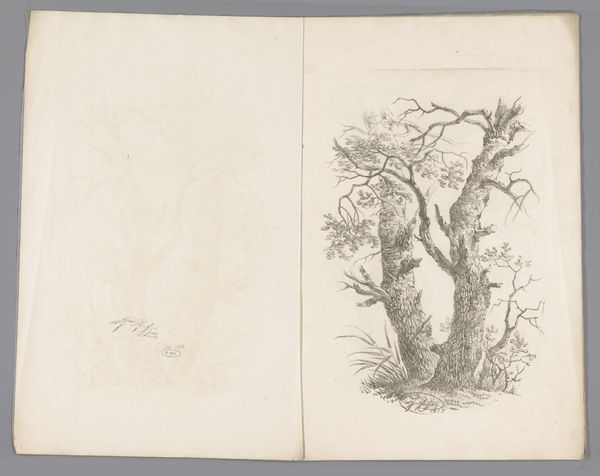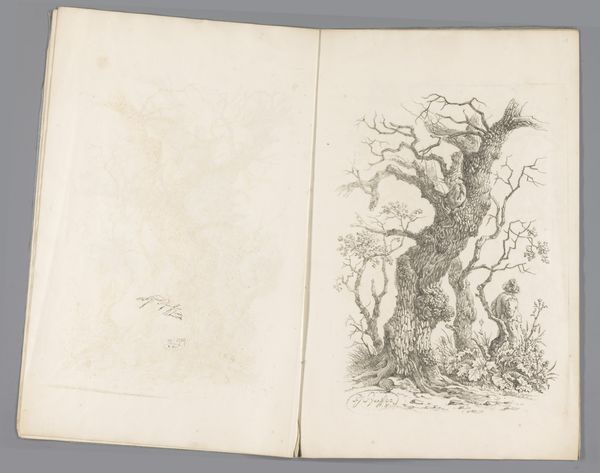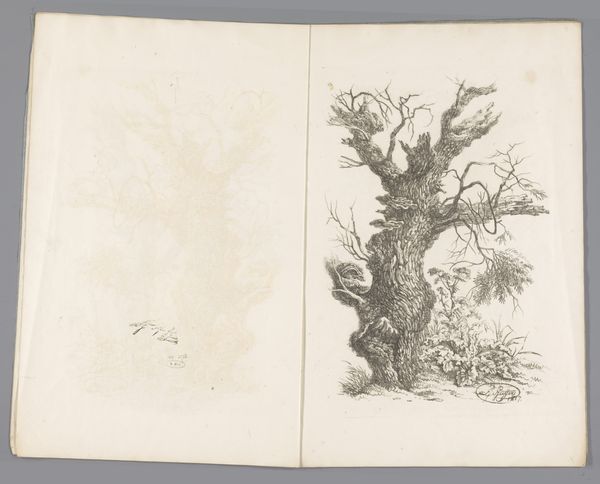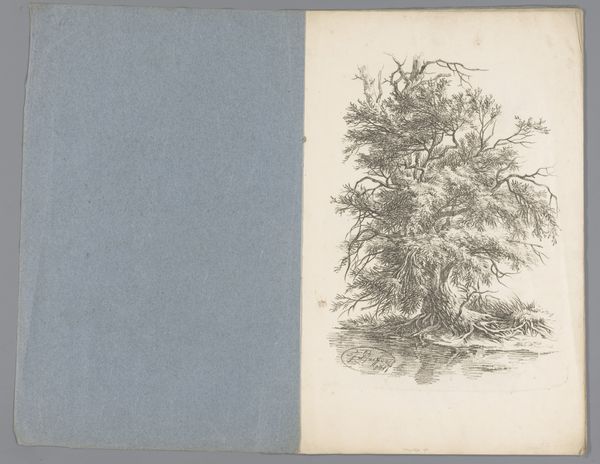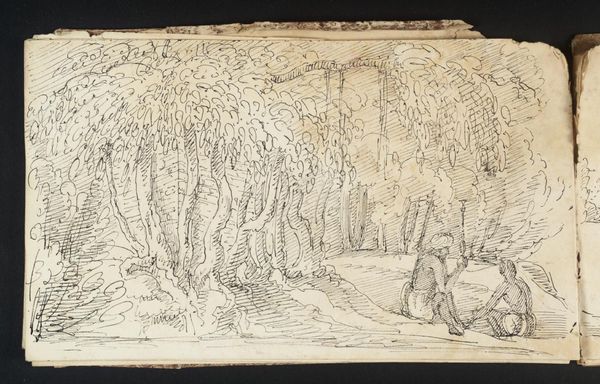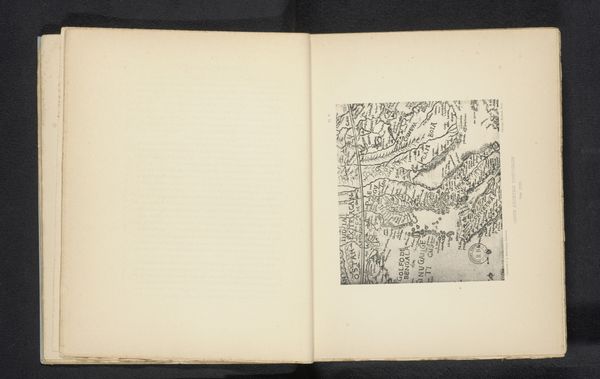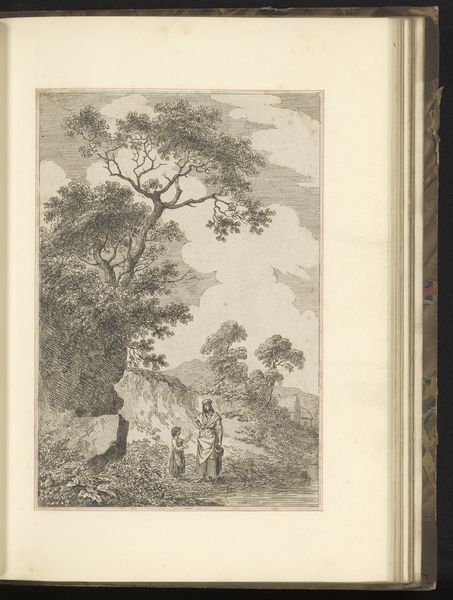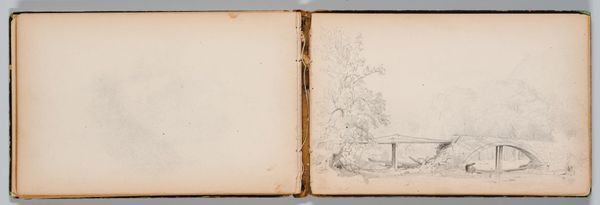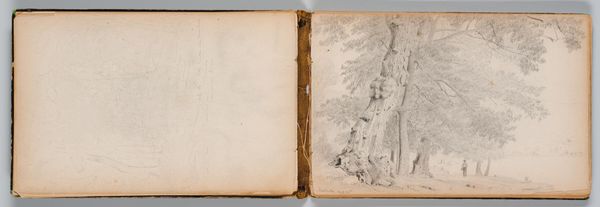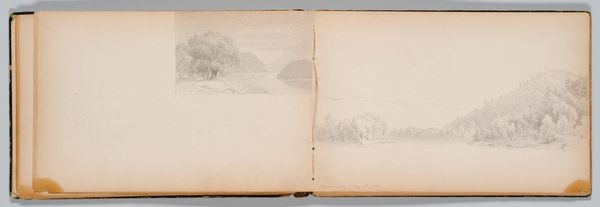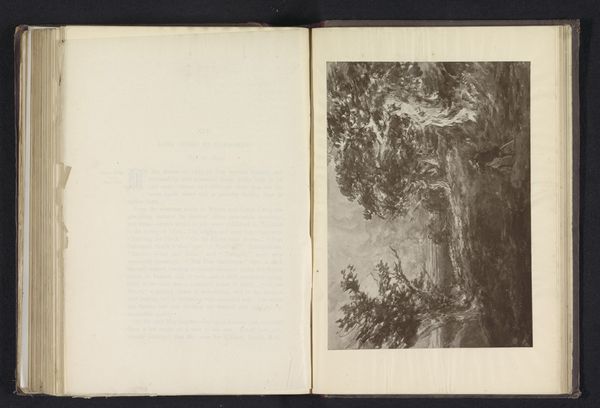
drawing, paper, pencil
#
drawing
#
landscape
#
figuration
#
paper
#
forest
#
romanticism
#
pencil
#
genre-painting
Dimensions: height 441 mm, width 292 mm
Copyright: Rijks Museum: Open Domain
Curator: Standing before us is a pencil drawing titled "Man met mand naast boom"—"Man with basket next to tree"—created in 1817 by François Joseph (II) Pfeiffer. It's a landscape sketch, really. What strikes you about it at first glance? Editor: The somberness of it. The man feels small, even burdened, beside the behemoth of that gnarled tree. There’s a real weight in the scene, an oppressive stillness despite it being nature. Curator: It's interesting you pick up on that burden. The figure, carrying a basket, could be seen in any number of ways, of course. But, the artist, living through post-Napoleonic Europe, witnessed a period of reconstruction, economic hardship, the slow return to power of old regimes... Perhaps it's about carrying the weight of that societal pressure? Editor: Definitely. And look at the detail given to the tree’s roots, the almost tortured texture of its bark, contrasted with the stark, empty page to the left. It screams imbalance and perhaps speaks to the exploitation of resources, the taking from the earth without replenishing it. Romanticism, right? Glorifying nature while conveniently ignoring our destructive role. Curator: That contrast you point out also affects the eye, I think. It's as if we are drawn into that shadowy space at the foot of the tree, right there with the man and his basket. The tree, in all its rough grandeur, shelters the man and his labor. Pfeiffer was fond of detailed botanical studies so to see him weave it into the depiction of a person gives a different sense. Editor: It really does make one wonder about the context of his labour. Who does that work serve, and to what extent are we as viewers implicated in perpetuating those structures? I can’t help but see the roots reaching deeper than the page allows, digging into histories of colonialism and class disparity. The very whiteness of the paper reminds of its cultural neutrality that just isn't possible. Curator: Yes, that visual space creates an open field for possibilities. A lot of emotion is there, embedded into it with those simple pencil strokes. It feels unfinished, and maybe that’s the point. We all are standing right in that moment that man and tree share. Editor: Ultimately, this work pushes us to confront uncomfortable truths, reminding us that even in apparent stillness, there exists a profound history of social and environmental exploitation—narratives we have the power and responsibility to reshape.
Comments
No comments
Be the first to comment and join the conversation on the ultimate creative platform.
